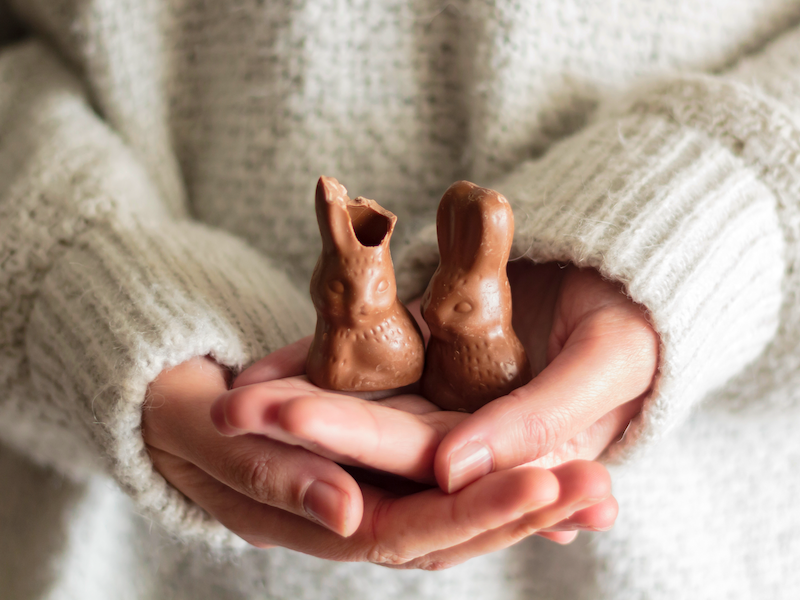Ever wondered what chocolate bunnies have to do with Easter? You may need to look back into the pagan origins of this holiday.
Bede, the Anglo-Saxon monk and historian from the 8th century, explains it. Once, there was a spring goddess who was loved and celebrated as a symbol of fertility and rebirth. She was called Eostre. According to the legend, Eostre has changed a bird into a rabbit, who could lay eggs.
The birth of Easter bunnies
When Anglo-Saxons became Christian, the celebration in the name of Eostre had to change. Yet the familiar word “Easter” and attributes of the festival – eggs and rabbits – have been preserved.
In Germany, Eostre was called Ostara and her symbol was a rabbit called Ostara Hare. The Germanic celebration of Easter preserved this symbol as well as the tradition of giving eggs to children.
About 1600 children would make nests for the Easter rabbit to leave his “presents” inside them. As time went by, nests turned into baskets and candy replaced eggs.
Chocolate bunnies – an irreplaceable Easter feature
Originally made of paper and stuffed with sweet treats, rabbits became chocolate. This is because cocoa became more widespread and affordable thanks to the Industrial Revolution.
In the early 19th century, rabbits made of chocolate became an irreplaceable attribute of Easter festivities. It started in the US and soon the rest of the Christian world followed this tradition.
However, this story with a spring goddess and her pet rabbit has a few flaws. They got detected by modern scientists. Bede was accused of inventing the spring spirit. And chocolate manufacturers used Easter festivities to attract high profits from their sales.
Either way, truth or myth, chocolate bunnies are with us for good.
Make your own chocolate Easter bunny
Indeed, if you feel like getting a chocolate bunny this Easter, you will be spoiled for choice. However, it is also easy to make one at home. And you may choose your favourite chocolate.
The home-made chocolate rabbit requires you to have a mould. They are easy to come by in various “hobby and crafts” stores around Easter time.
But take care which kind of chocolate you choose. Remember that the darker the chocolate, the faster it melts while preserving the rich flavour. Milk chocolate contains more sugar. And white chocolate will usually become sweeter with melting. With both types, the consistency of the dissolved product will be thicker compared to the darker counterpart.
Also, if you are melting chocolate on a hob, make sure to stir it all the time. This will prevent it from burning and clumping.
- Take a medium-size pot and fill it with water. Set to boil, then reduce the heat for a gentle simmer. Take a heatproof bowl that can fit in the pot with simmering water. Make sure the water doesn’t touch the bottom of the bowl.
- Break up the chocolate into even-sized pieces and put them in the bowl. Melt for 4-5 minutes, stirring often.
Once the chocolate is melted, pour it into the 2 moulds. Let it cool to room temperature, then transfer to a freezer for 5 minutes.
To glue the two halves of the rabbit:
- Use some more melted chocolate.
- Brush it on the top side of the rabbit and cover it with the other side.
- Put it back in the freezer for another 5-10 minutes. Your rabbit might have some excess chocolate around the edges.
- Carefully trim it with a knife.
Happy Easter!











What do you think?